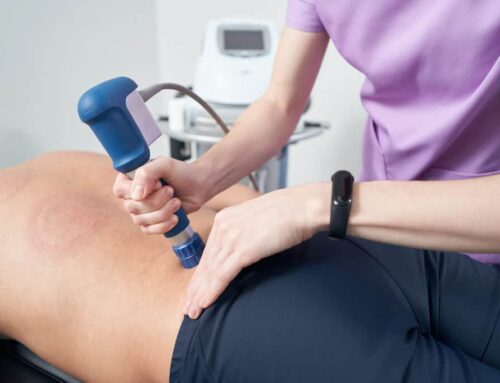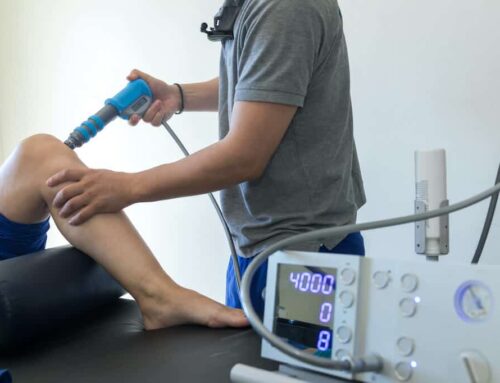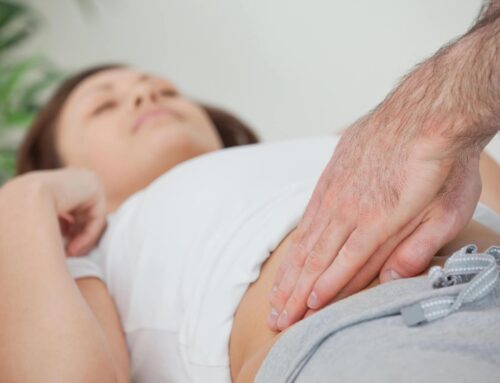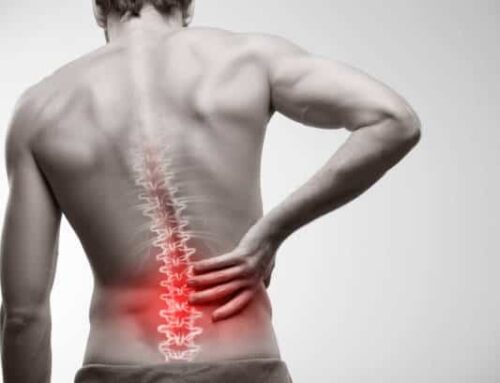Are you feeling hip flexor tightness across the front of your hips when you go to stand, walk, or start to run?
There are several muscles at the front of your hip that, as a group, are called your hip flexors. Together they can contribute to not only your tightness, but also hip pain, knee pain, and low back pain! Read on to find out:
- The role of the hip flexors
- The relationship of hip flexor tightness to:
- Hip pain
- Knee pain
- Low back pain
The Hip Flexors
The hip flexors are separated into two groups. Your short hip flexors and your long hip flexors.
We’ll start with the short guys. These are known as you “iliacus” and “psoas” muscles. Together they form one super-muscle called your “iliopsoas.” They both form one attachment at the inside of your thigh, but it surprises a lot of people to know that they originate from the inside of your pelvis, and the lumbar spine (this is the lower part of your back).
The long hip flexors are your rectus femoris, TFL (tensor fascia lata), and sartorius (almost as cool as it sounds. These guys all originate near the front of your pelvis and attach somewhere near your knee. Fun fact – the TFL is what pulls your IT-band into being so tight.
Blog image: https://www.dancelife.com.au/hip-flexor-stretch/
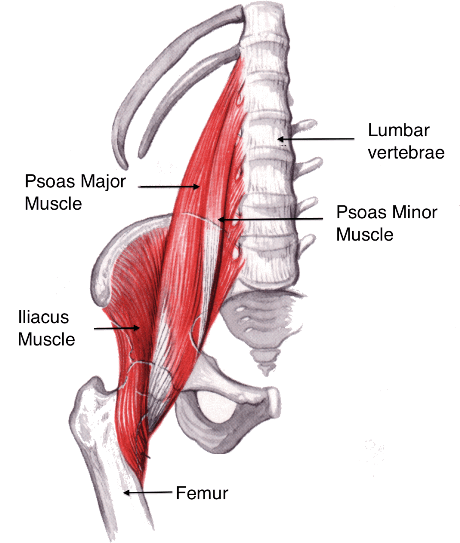
If you’ve been struggling to relieve hip flexor tightness, our experts can help you with a game plan to address it once and for all. Click the button below to inquire about working with an expert on our team.
Thanks to our modern-day society we sit with our hips flexed in front of us all day. Then if we do exercise, it’s mostly in the forward-backward direction with very little twisting, turning, or sideways movements. This means that throughout the day, the hip flexors can get bunched up, and over time they can shorten. It also means that since we don’t move in all those directions, that the other muscles in the hip responsible for those directions get weak. So the hip flexors get tight to try to support the hip. Throw in a weak core and you’ve got yourself the perfect storm.
You can stretch those puppies until little bo-peep finds all her sheep. It’s not going to solve your problem.
Since these flexors attach to our spine, pelvis, and femur, they can impact all of the joints in our lower body. Read on to discover how this issue can give you knee pain, hip bursitis (or arthritis!), and low back pain.
Relationship To Knee Pain
This one is pretty straight-forward. Your rectus femoris attaches to your knee cap (patella), and so does the TFL through the IT-band. When these muscles are tight they cause the knee-cap to get compressed against your thigh bone (femur). This happens when you squat, walk, run, you name it. Then you go to sit down with your knees bent and the knee-cap once again gets squished against your thigh bone. Then when you go to stand up “wa-la!” your knee pain catches you off guard and you look like you’re trying to dodge a sudden swarm of bees flying overhead.
Relationship To Hip Pain
Hip flexor tightness can contribute to more than one condition at the hip. In regards to hip bursitis, the TFL being so tight can rub directly on this “bursa” on the side of your hip. A bursa is a fluid filled sack that’s supposed to help the muscles and tendons glide over the bones. It’s also filled with nerves, so it doesn’t like being compressed all day long. Throw in some compensation from your piriformis muscle and now you’ve got hip bursitis, sciatica, and a feeling like a tooth-ache in your buttocks. Then when you go to lie down on your side that night your whole leg hurts.
How does hip flexor tightness contribute to arthritis? Well, if your hip flexors are tight because your core and other hip muscles are weak, this creates altered gliding inside the hip joint. Over time, even though you don’t quite feel this, the hip is rolling around like a loose marble inside the joint. This wears out the cartilage, and may eventually lead to more serious forms of arthritis – can you say hip replacement?
Relationship To Back Pain
Think back to the mighty iliopsoas for this one. If you’re hip flexors are tight, they’re not allowing you to stand up straight without arching your back. They also put the hip in a position of instability. This creates the perfect wobbly storm for your back. You’ll start to feel all sorts of muscles tighten to try to compensate, you’ll get compressed joints in your back that always feel like they need to be popped. Do you know what lives between the joints? The discs and the nerves! These guys are innocent bystanders in this imbalanced body you call home.
The irony of all of this, is that everyone wants an MRI to “see what’s wrong” with the discs and nerves. But if you’ve followed along closely, you should now be able to see that this is a RESULT, not the CAUSE of your issue. Getting the discs and nerves addressed is like reprimanding a child for getting an F on a paper, when they haven’t learned to read.
What Can You Do About Hip Flexor Tightness?
For starters, stop stretching your hip flexors. If you’re still not convinced, and want to know a little more about why hip flexors get tight, we have just the article for you.
If you’ve accepted your fate and know you need to get stronger, check out our pieces on core strength for low back pain. For some quicker relief from knee pain we have a few great mobility tips.
If you’re overwhelmed by how complex fixing all of this can be, you need to work with an expert. Click one of the buttons throughout the article to inquire about availability to work with one of our doctors, or just give us a call.


